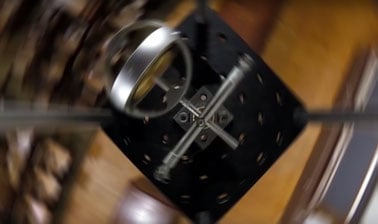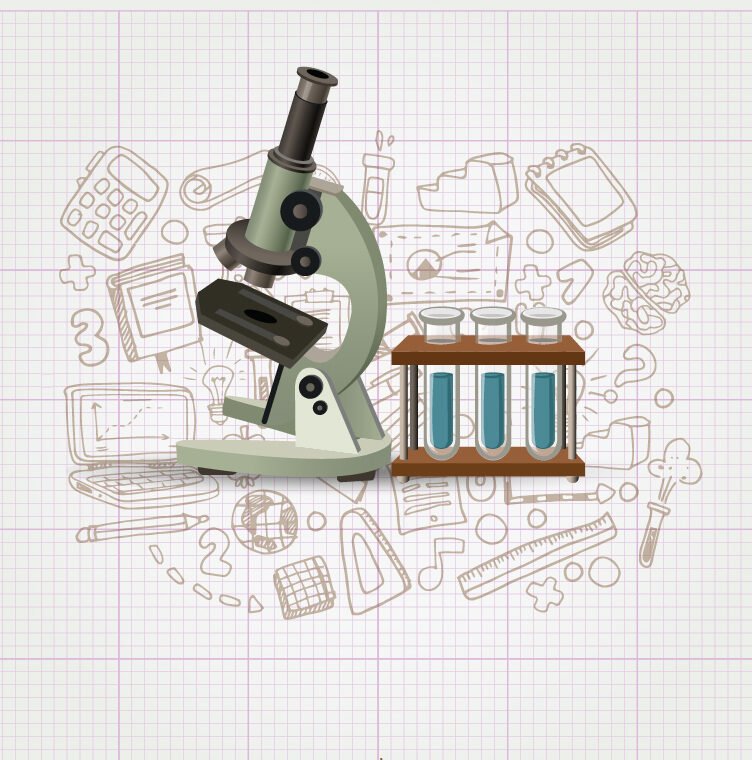The online simulations of special pendulums on this page will allow you to see how some very particular pendulums work, which are used to study complex movements or to demonstrate physical phenomena, such as conical pendulums, Newton’s cradle, or Foucault’s pendulum.
What are special pendulums
Special pendulums are particular devices or configurations of pendulums that exhibit interesting or unusual behaviors. These pendulums are studied in physics and used as tools in a variety of areas, such as scientific research, engineering and education.
Pendulums with complex movements
Some pendulums exhibit more elaborate movements than the simple pendulum, making them interesting for both teaching and research in physics. These pendulums are not limited to oscillating in a vertical plane; their trajectories can be circular, conical, or even chaotic. Studying them allows us to observe phenomena such as the interaction of multiple forces, nonlinear behavior, and the effects of angular momentum, providing visual examples of advanced concepts in dynamics and mechanics. Among them are the double pendulum, the conical pendulum, and the inverted pendulum, each displaying unique characteristics of stability and movement.
Double pendulum
It Consists of two single pendulums connected together. This system exhibits chaotic behaviors and is used to study complex phenomena, such as chaos theory and nonlinear dynamics.
Conical pendulum
Instead of oscillating in a vertical plane, the conical pendulum oscillates in an inclined plane. The string is fixed at a point and the mass describes a cone as it oscillates. It is useful for illustrating concepts of centrifugal force and angular acceleration.
Inverted pendulum
A pendulum in which the mass is above the point of suspension rather than below. This type of pendulum is used in control and stabilization systems, such as in robot line followers.
Physics demonstration pendulums
Some pendulums are designed primarily to illustrate specific physical principles or phenomena in a visual and educational way. These devices allow concepts such as the Earth’s rotation, energy conservation, and linear momentum to be observed, transforming abstract ideas into tangible experiments. Notable examples include the Foucault pendulum, which demonstrates the Earth’s rotation, and Newton’s cradle, which exemplifies energy transfer and collision behavior.
Foucault pendulum
A long, heavy pendulum that oscillates in a fixed plane as the Earth rotates beneath it. Because of the Earth’s rotation, the plane of oscillation of the pendulum appears to rotate slowly relative to the Earth’s surface. This pendulum is famous for demonstrating the rotation of the Earth.
Newton’s cradle
It consists of a series of identical balls suspended on wires or cables of different lengths so that they form a straight line. It is a classic example of how the amount of motion and energy is conserved in a closed system.
Other special pendulums
There are various pendulums that have been used in experiments, laboratories, or educational demonstrations throughout history. These include the elliptical pendulum, which follows an elliptical rather than circular path; the compound pendulum, which combines a simple pendulum with a heavier object to study more complex motion; and the torsion pendulum, which oscillates due to the torsion of a string or wire, useful for measuring physical constants such as the torsional modulus of a material. These pendulums broaden the understanding of advanced concepts in dynamics and mechanics, offering concrete examples of non-trivial phenomena.
Applications and curiosities
Special pendulums are not only teaching tools; they also have practical applications in measuring physical constants, clockmaking, stability control in engineering, and studies of chaotic dynamics. In addition, some, such as the Foucault pendulum or Newton’s cradle, have become icons of scientific demonstrations, visually and attractively displaying fundamental principles of physics. These devices allow theory to be connected with observation, arousing curiosity and facilitating the intuitive understanding of complex phenomena.
These are just a few examples of special pendulums. The physics of the pendulum is a broad and fascinating subject, and there are many other configurations and variations that are studied and used in various applications.
Explore the exciting STEM world with our free, online simulations and accompanying companion courses! With them you'll be able to experience and learn hands-on. Take this opportunity to immerse yourself in virtual experiences while advancing your education - awaken your scientific curiosity and discover all that the STEM world has to offer!
Simulations of special pendulums
- Newton
- Conical
- Foucalt
- Swing
Newton’s cradle
Drag one or more balls and observe how the energy passes from one ball to another.
Conical pendulum
In this simulation, the ball moves along a horizontal circular path. Observe what happens when the angle of extension is varied. Is there an equilibrium of forces?
Foucalt’s pendulum
Foucalt’s pendulum is a device invented by the French scientist Leon Foucault to test the rotation of the Earth.
- Newton
- Conical
Giants of science
“If I have seen further, it is by standing on the shoulders of giants”
Isaac Newton

Gottfried Wilhelm Leibniz
–

Galileo Galilei
–
Become a giant


Mechanics, Part 2



Mechanics, Part 1



Dynamics and Control



Circuits for Beginners



AP® Physics 2: Challenging Concepts



Pre-University Physics



AP® Physics 1





























